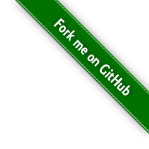#333 screen
GNU Screen is a terminal multiplexer that can also be used as a general serial console.
Notes
GNU Screen is a terminal multiplexer.
The most common ways I use it:
- connect to multiple servers from a single terminal window on my machine
- use it on a server to establish a long-running login shell that I can detach and reattach at a later time
- as a general purpose serial console
command-line options
Some of the most common:
screen– with no options this starts new screen session with a shell in a virtual screen.screen -S <name>– starts a session with a given name. This can help find and reconnect to the correct session later.screen -r– reconnect to a disconnected session.screen -r <name>– reconnect to the named session.screen -rd– reconnect to a disconnected session, disconnecting any existing client (if any).screen -ls– list all sessions (connected and disconnected).
control commands used inside of a screen session
All screen commands start with <ctrl>-a. The most important ones:
<ctrl>-a ?– Show help<ctrl>-a d– Disconnect the session. The session continues in the background as a daemon which you can reconnect to later.<ctrl>-a k– KILL the current screen<ctrl>-a c– Create a shell in new virtual screen. This screen is added to the current session.<ctrl>-a n– Next screen<ctrl>-a p– Previous screen
using screen as an RS-232 / general serial terminal
Screen makes a very good serial port terminal. You can connect a screen window to any serial device in /dev.
On linux, most serial devices in linux are named like /dev/ttyS0, /dev/ttyAMA0, and /dev/serial0 for a built-in serial port;
or for USB-to-serial adapters the names are usually like /dev/ttyUSB0 and /dev/ttyUSB1.
The communication settings are a comma separated list of control modes as would be passed to stty. See the man page for stty for more info.
Old, slow-speed serial devices usually play nice with 9600 8N1 (9600 baud, 8-bits per character, no parity, and 1 stop bit):
screen /dev/ttyS0 9600,cs8,-parenb,-cstopb,-hupcl
screen /dev/ttyS0 19200,cs8,-parenb,-cstopb,-hupcl
screen /dev/ttyS0 115200,cs8,-parenb,-cstopb,-hupcl
# use odd parity:
screen /dev/ttyS0 9600,cs8,parenb,parodd,-cstopb,-hupcl
# even parity:
screen /dev/ttyS0 9600,cs8,parenb,-parodd,-cstopb,-hupcl
The following settings work with the Coyote Point E450si load balancers
screen /dev/ttyS0 9600,cs8,-parenb,-cstopb,-hupcl
macOS serial devices
On macOS, devices are named like /dev/cu.* and /dev/tty.*.
A USB-to-Serial device (such as those using the CH340G chip) may appear with up to 4 device file handles, e.g.:
$ ls -1 /dev/*serial*
/dev/cu.usbserial-2420
/dev/cu.wchusbserial2420
/dev/tty.usbserial-2420
/dev/tty.wchusbserial2420
The /dev/cu.* (Callout) and /dev/tty.* (Terminal) devices in macOS both manage serial communication, but they differ in behavior during initial connection and modem control handling:
- Behavior During Open:
/dev/cu.*(Callout):- Opens immediately, ignoring modem control signals like Carrier Detect (CD).
- Use this when you want direct access to the port without waiting for a connection handshake (e.g., programming microcontrollers).
/dev/tty.*(Terminal):- Waits for modem signals (like CD) before opening. If the modem isn’t ready, opening may block or fail.
- Use this for terminal sessions requiring modem negotiation (e.g., dial-up).
- Symbolic Link vs. Device File:
- Both are symbolic links pointing to the same underlying device node (e.g.,
/dev/cu.usbserial-2420→/dev/tty.usbserial-2420). - Deleting either link doesn’t remove the actual device; macOS recreates them dynamically.
- Both are symbolic links pointing to the same underlying device node (e.g.,
Use Cases:
/dev/cu.*: Preferred for programmatic control (Arduino, Raspberry Pi, sensors) where you need immediate, unconditional access.
screen /dev/cu.usbserial-2420 9600 # Opens instantly
/dev/tty.*: Used for interactive terminals or legacy modem applications where carrier detection is critical.
screen /dev/tty.usbserial-2420 9600 # Waits for carrier signal
Most USB serial devices (Arduino, FTDI) work with either, but /dev/cu.* is more reliable for programming (avoids blocking).
Use /dev/tty.* only if modem handshaking is explicitly needed.
